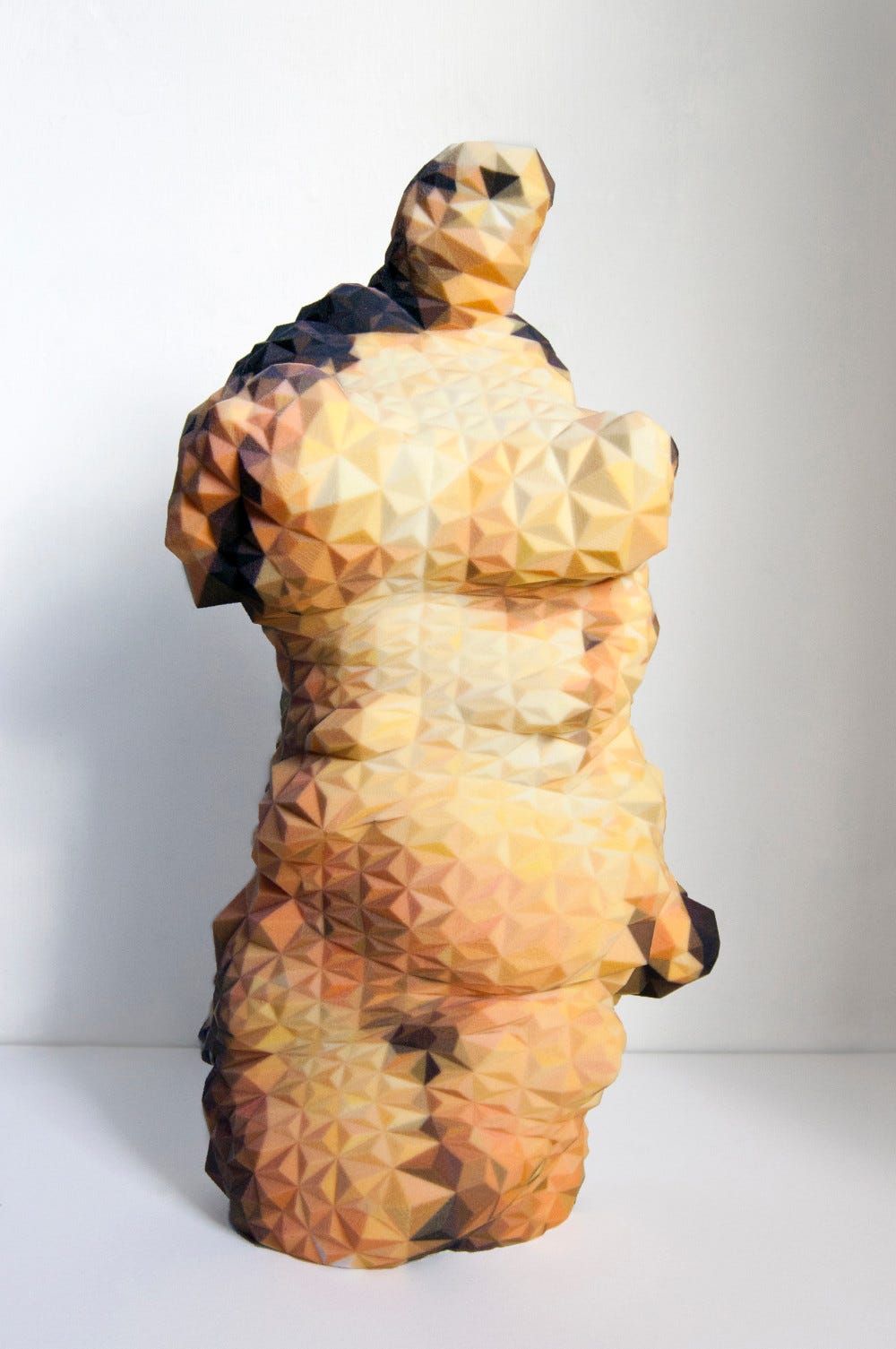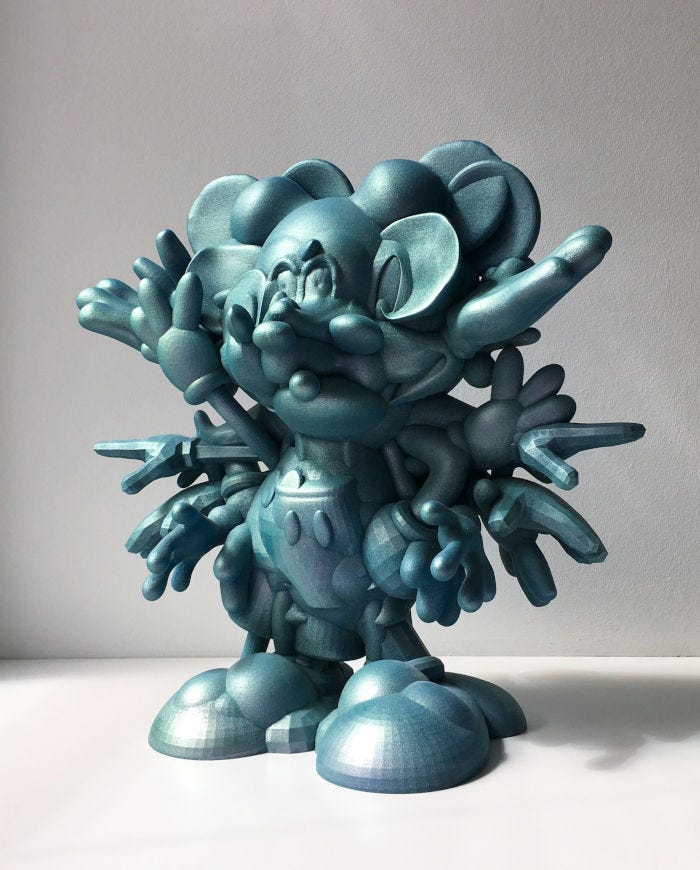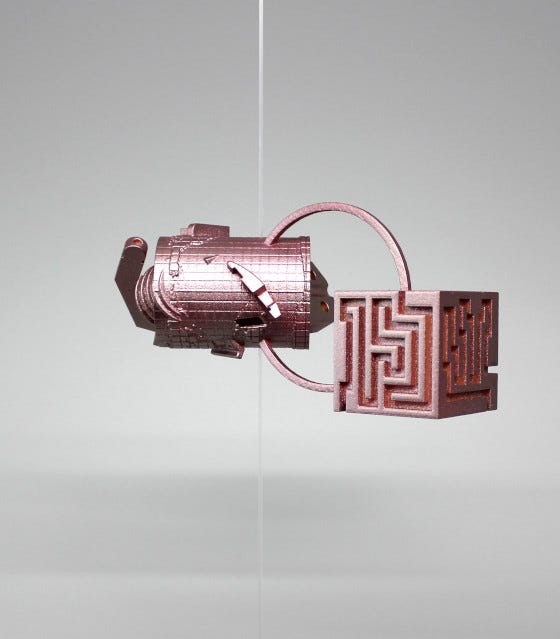

All My Chaldrons
source link: https://medium.com/@jonathan.lethem/all-my-chaldrons-7b854dc04c45
Go to the source link to view the article. You can view the picture content, updated content and better typesetting reading experience. If the link is broken, please click the button below to view the snapshot at that time.
All My Chaldrons
My Premonition of NFTs, Which Didn’t Prevent Them
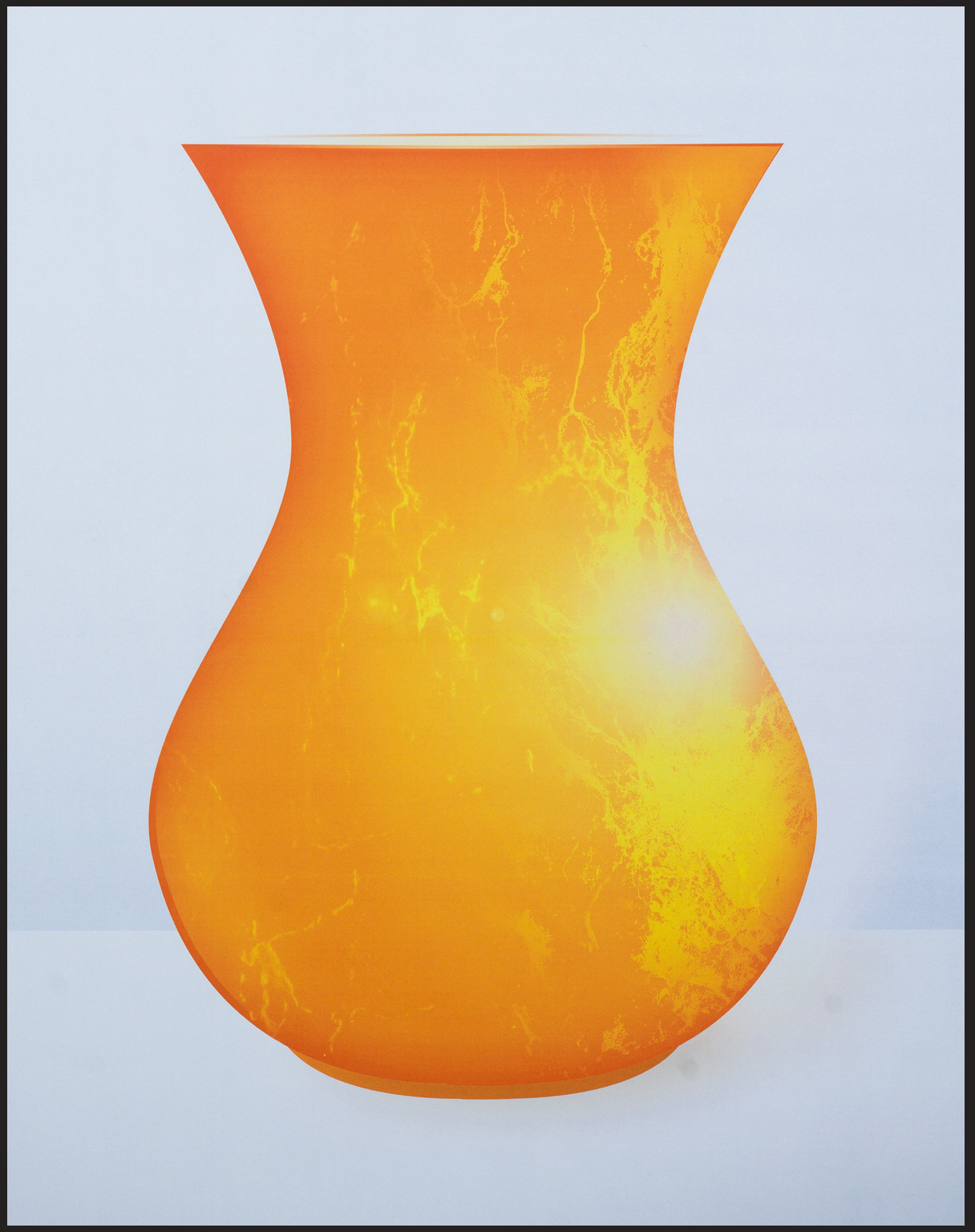
“Chaldron”, by Robert Jimenez/photo Sam Walker
In Chronic City, a novel that I wrote so long ago that I feel I must have been a different person, I invented something called a “chaldron”.
Some people see chaldrons readily, other people need help:
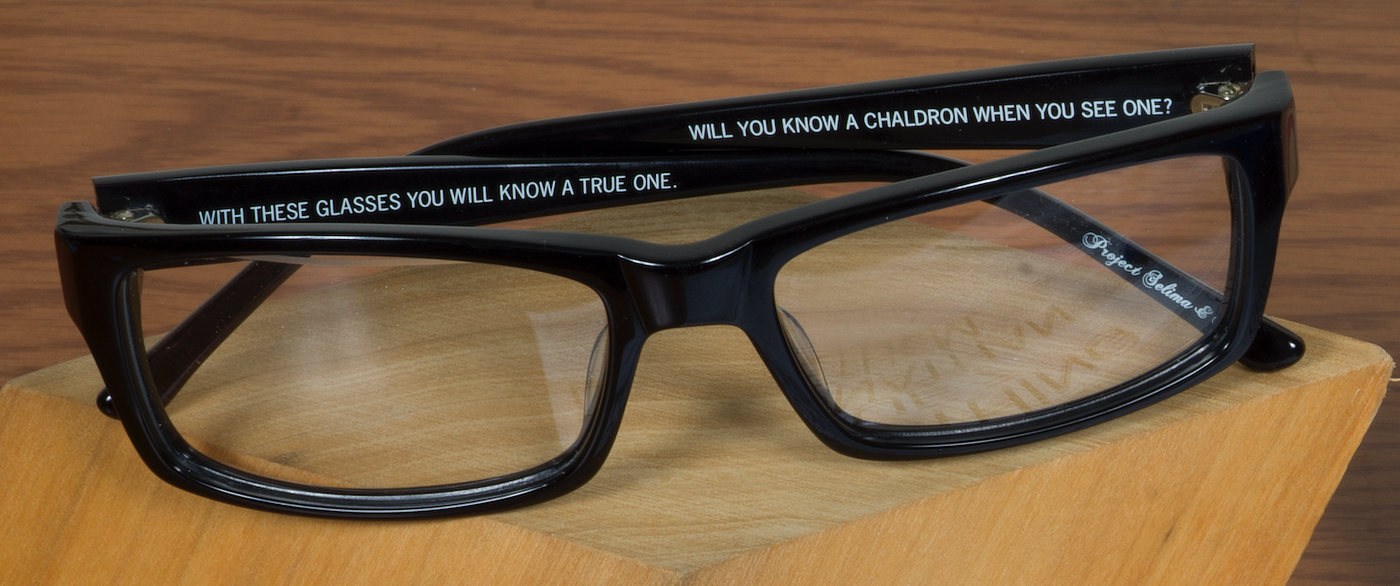
Chaldron Optical System. Photo by Sam Walker
To begin, I should first “disambiguate”. The word chaldron existed before I made it up. A chaldron was an antiquated British term of measurement of dry volume, most often associated with a load of coal. Here is a photograph from Wikipedia of “a chaldron-wagon at Beamish”:
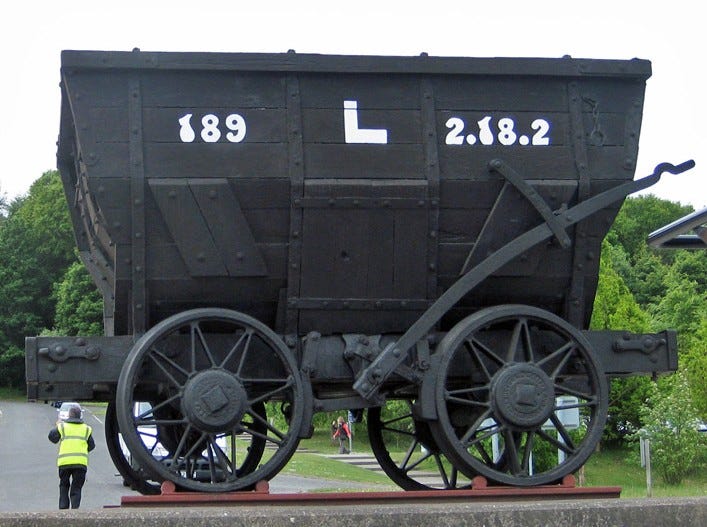
“chaldron-wagon at Beamish” courtesy of Wikipedia. Perspective makes it look bigger than it is. It looks awesome!
If you were taking coals to Newcastle (but why would you want to do that?) you’d take them in chaldron-wagons, most likely.
In the novel Chronic City chaldrons are mysterious and rare beacon-like, vase-shaped artworks that the characters bid to acquire on the internet. (Ebay, specifically.) The characters never win an auction, so they never get a chaldron shipped to their homes. Instead, they persist in their foolish belief that chaldrons are “real”.
Later in the book, the characters are appalled to discover that chaldrons exist only as a virtual representations —propositional pixel emblems of the abstracted concept of ‘possession’. No physical chaldron ever existed, or can ever exist, to be possessed. That’s what makes them chaldrons.
Chaldrons, in the novel, also operate as currency within a multi-player virtual reality game, and are produced by a form of “mining”.
Few people troubled to notice that a fourteen year-old novel had predicted Non-Fungible Tokens — NFT artworks. And why should they? A million science-fiction-writer-monkeys at a million typewriters are liable to produce a few accidental predictions now and then. Even a blind squirrel finds a nut now and again; a stopped clock is right twice a day, etc. (Though a stopped-up toilet is never right, not once.)
One odd thing about the internet, though, is that you can always locate the “few people”. Every viewpoint, every passing thought, has found a constituency. Here are a few examples from Twitter:
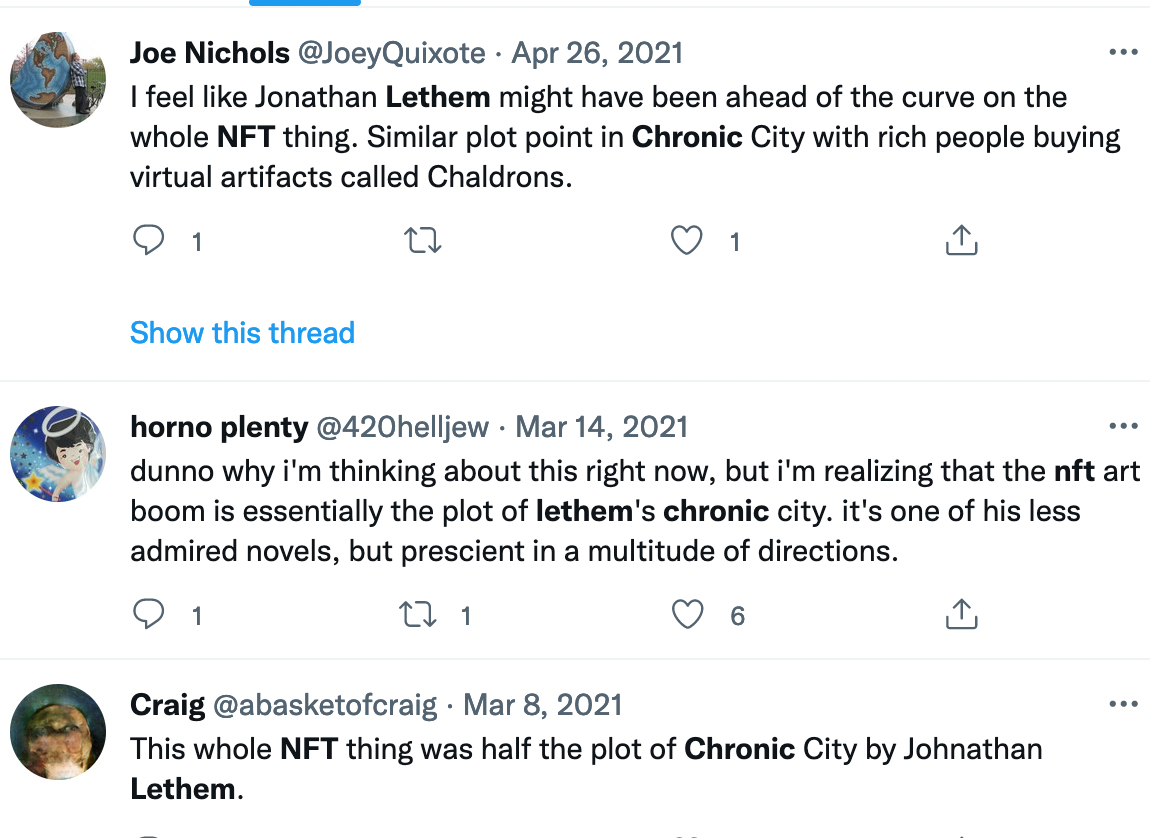
Tweets courtesy of Joe Nichols, horno plenty & Craig
I’m not an expert on NFTs, I should say. Let alone crypto-currency. The only thing I’m inclined to say about NFTs right now I already said better here, in a post I have pinned at the top of my profile:
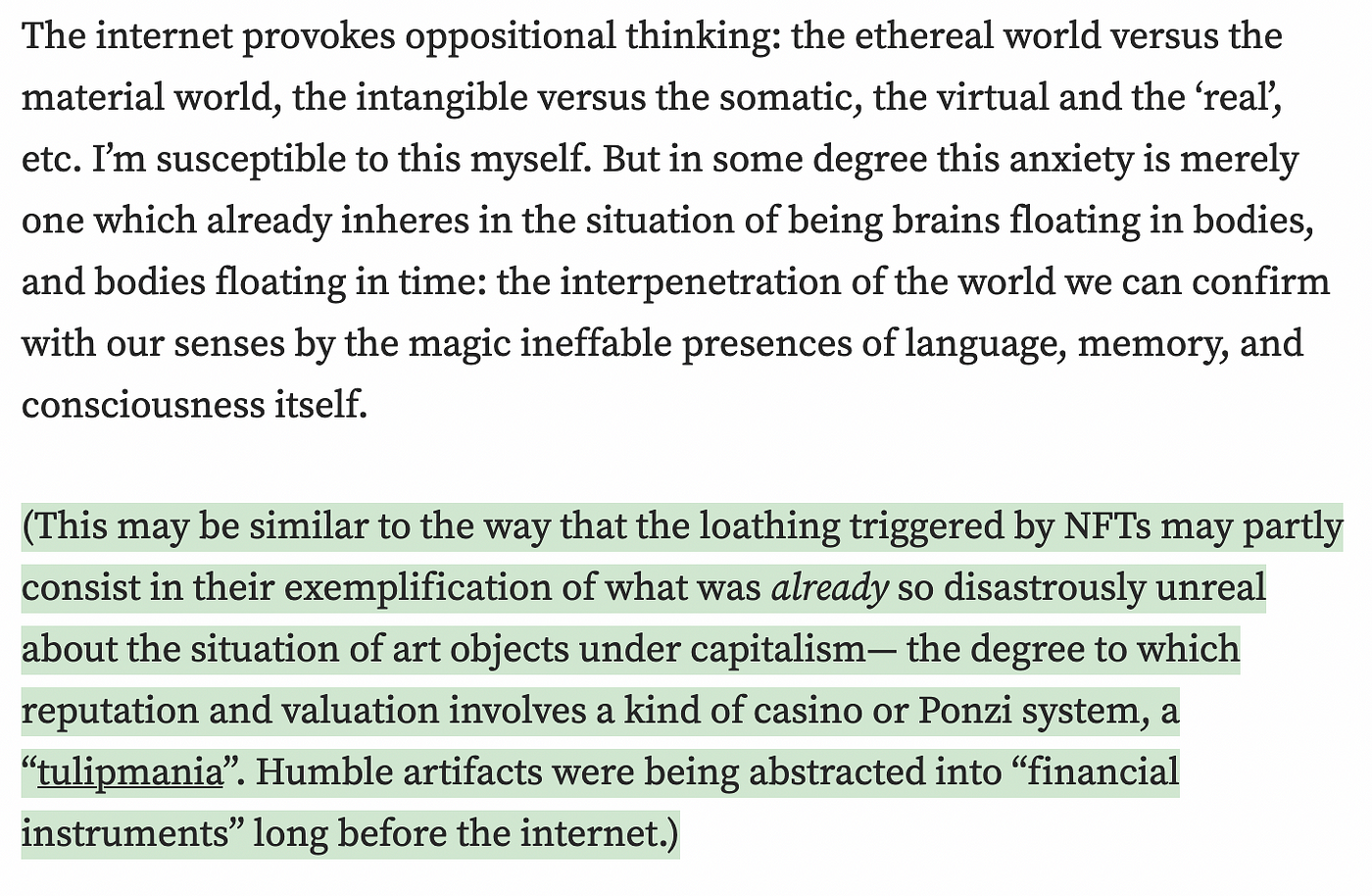
a screenshot of a Medium post, embedded in a Medium post.
In other words, I hate them too. The problem is, I might also love them. In Chronic City, I sought to pin down that mysterious desire for the ineffable which paradoxically lurks inside our distrust of the virtual, the ideological, the figurative.
(This might also have something with my lifelong enthrallment to Ubik.)
Life is always interpenetrated by illusion, materiality always riddled with abstraction. Because we have consciousness, the first virtual reality machine.
In a broken universe, we yearn to be consoled and sustained, not tricked. We want to be nourished by the steak, and denounce those who try to sell us the sizzle instead. Yet you can’t denounce sizzle; sizzle is bound to the steak, an integral function. And some version of steak is locked inside even the word “sizzle”, to such an extent that (if you like steak) your brain may now be conjuring an aroma as you read the word.
And there are gargantuan industries devoted to supplying us with abstracted versions of material things like food, or natural environments, or other human bodies.
The difficulty is making a home for the human within this perverse system.
I’m engaged by the push-pull between the realm of the material and the abstractions of our various languages, including the digital. I once wrote a short story about a “blog” that was a physical artifact, a derelict construction rotting by the seaside. (Of course there are artists who’ve tried to do a similar thing — to implant the aesthetics and motifs of the internet back into tangible space.)
And this morning what I hate about NFTs is not that they’re immaterial, per se, but that they’re cynically and unapologetically complicit in a Ponzi-scheme, fossil-fuel capitalism that destroys the planet. Also that they’re ugly.
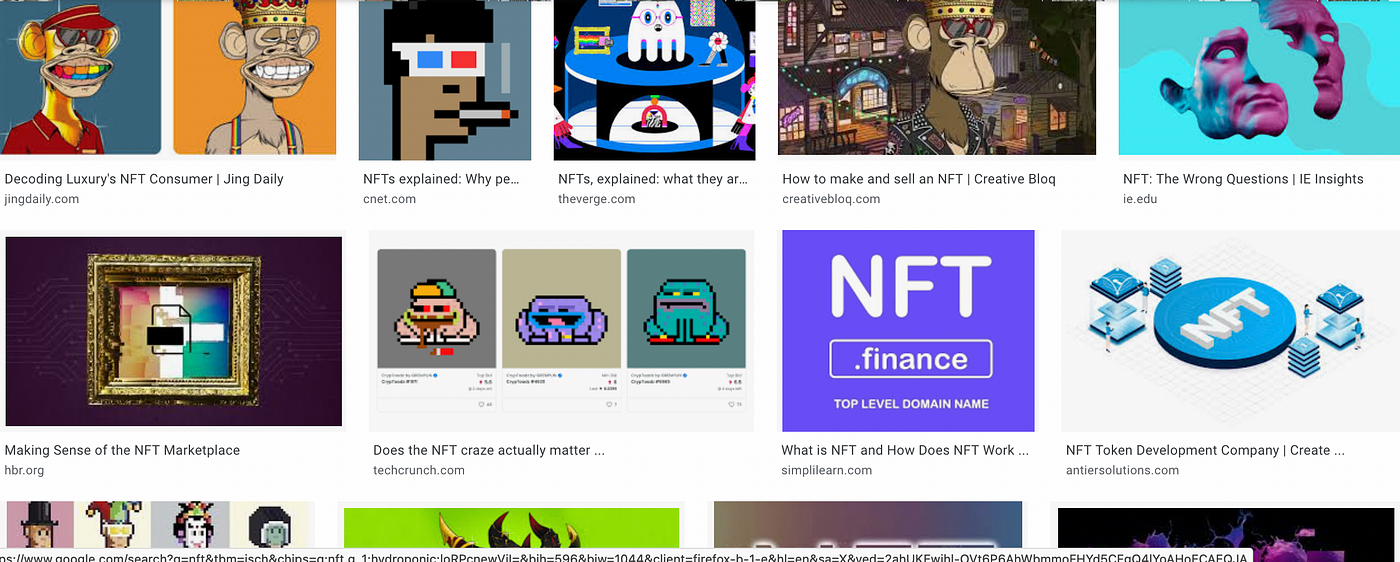
blechhhhhhhhhhh
I would much sooner look at these, by Matthew Plummer-Fernandez:
So, though my Ludditism is modulated by these tricky thoughts, I’ve spent most of my life on “team stuff”. Even as I work in the etheric realm of language, I pine for ways to embed it in materiality.
I’m absurdly proud of my books as physical objects, as if they were individual paintings or sculptures I’d hand-crafted, rather than mass-produced (and, in the long run, largely disposable) vehicles for language-delivery.
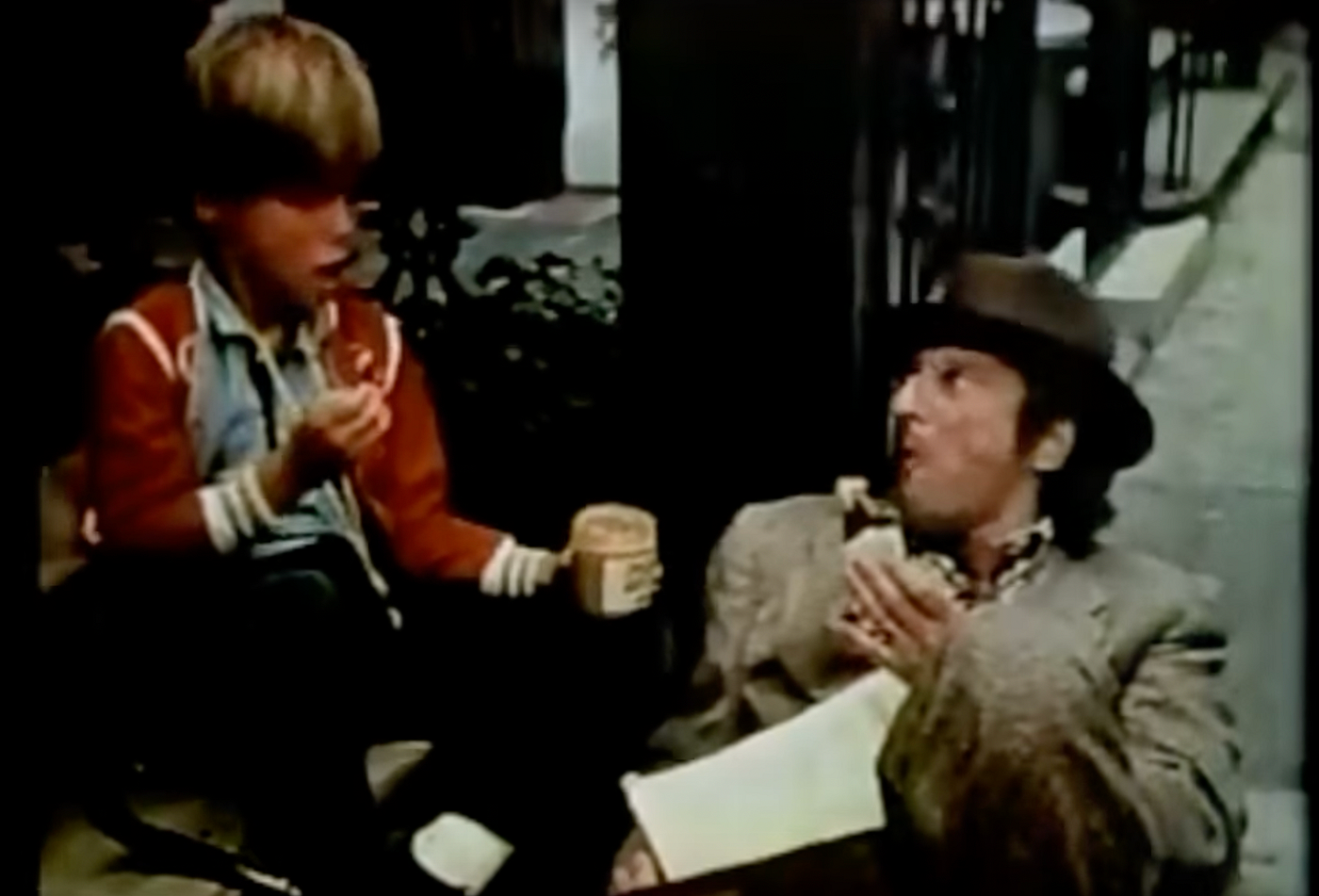
courtesy of Reese’s/Youtube
I love most of all when my words get stuck, like peanut butter piercing chocolate in the old Reese’s commercials that enchanted me as a child, in the ‘neighbor arts’.
My favorite thing is songs and movies and paintings that make reference to my writing. It somehow seems to prove I exist, in a way nothing else could.

Chronic City is an Austrian techno band
The painter Tom Sanford made two phantasmagorical paintings based on Chronic City. If I could have afforded to buy them, I’d shamelessly hang them in my house.
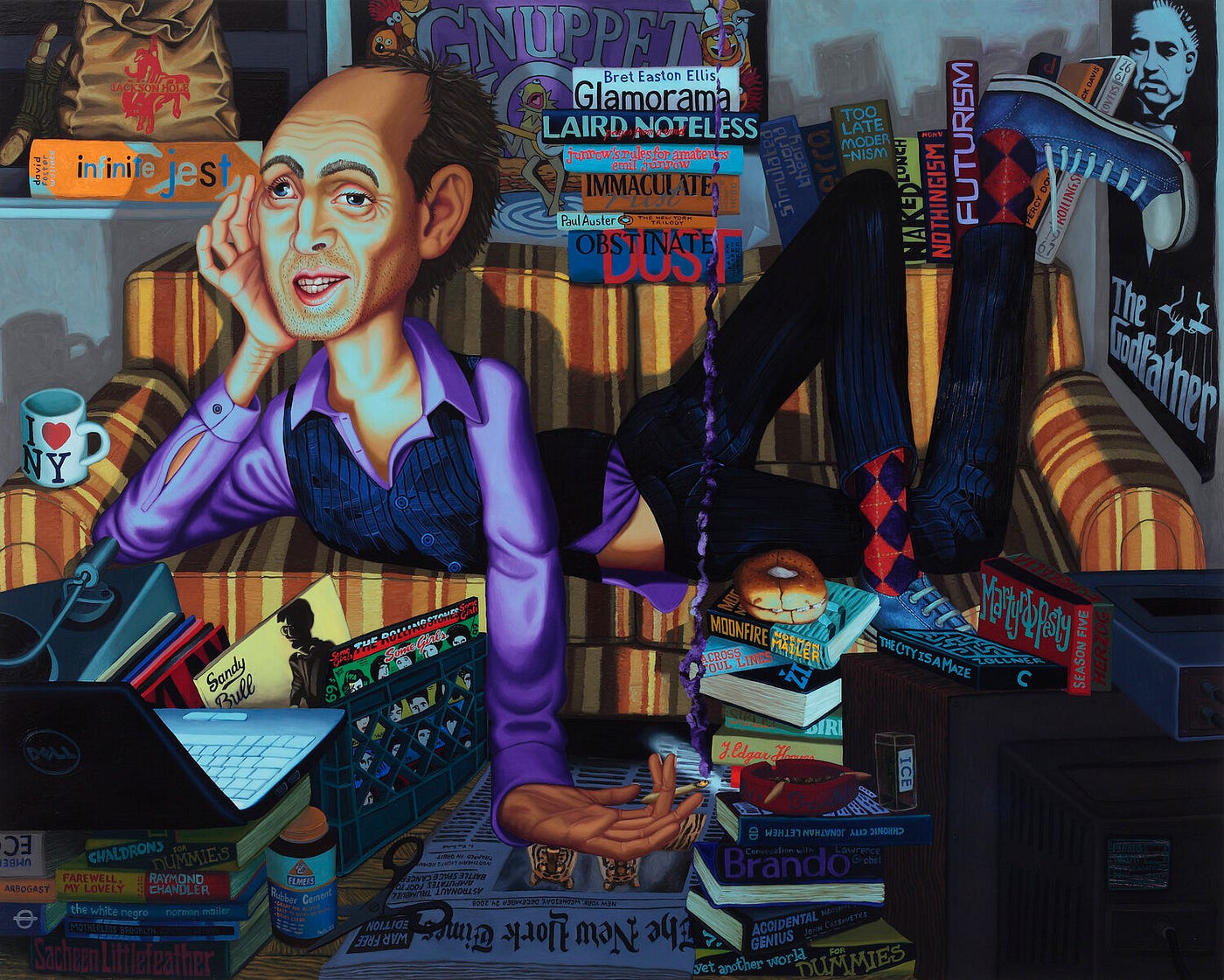
courtesy Tom Sanford.com
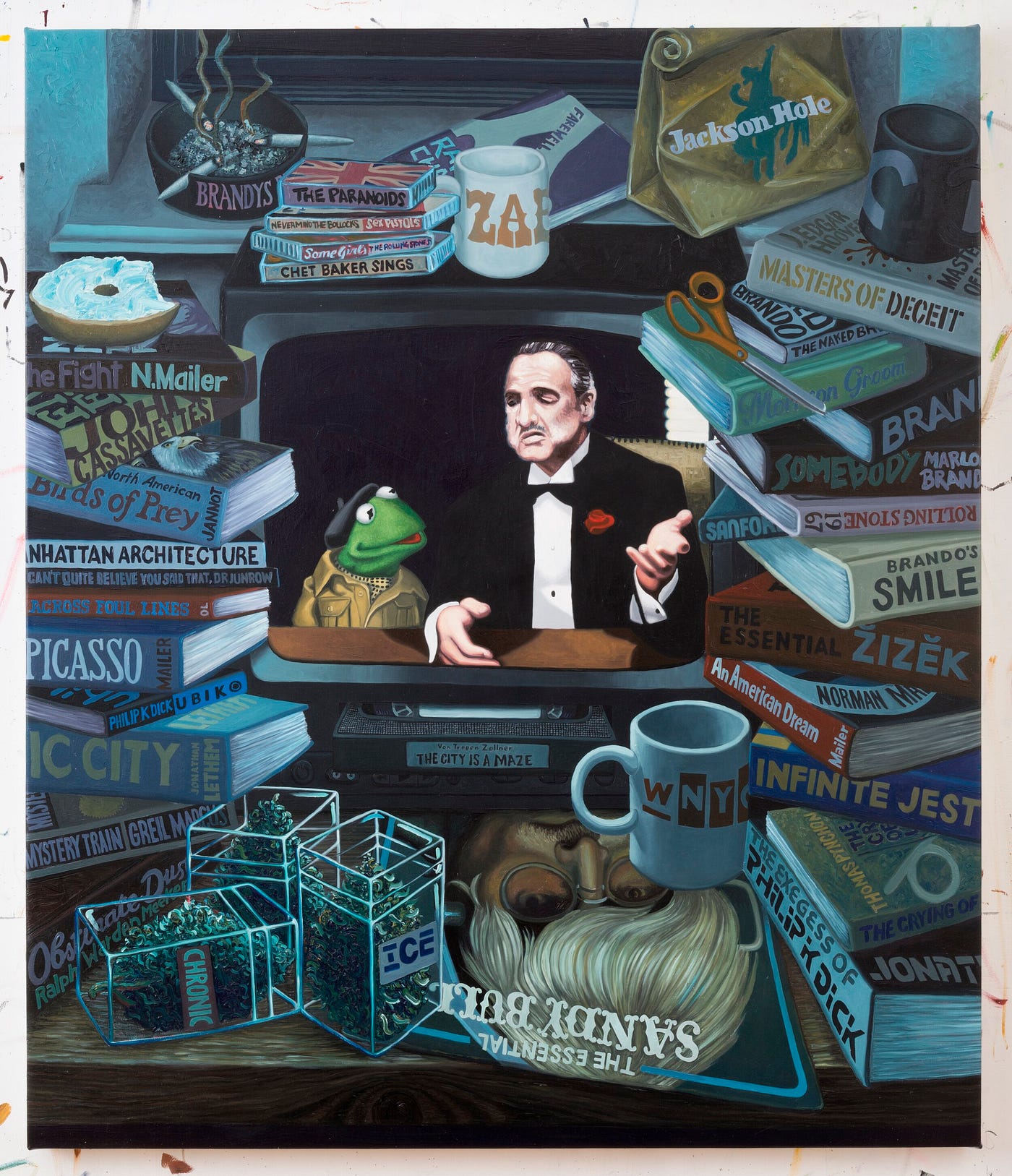
courtesy Tom Sanford.com
Tom did give me one of the studies for the main character of the book, Perkus Tooth. It is on a wall in my bathroom, as a kind of second mirror.
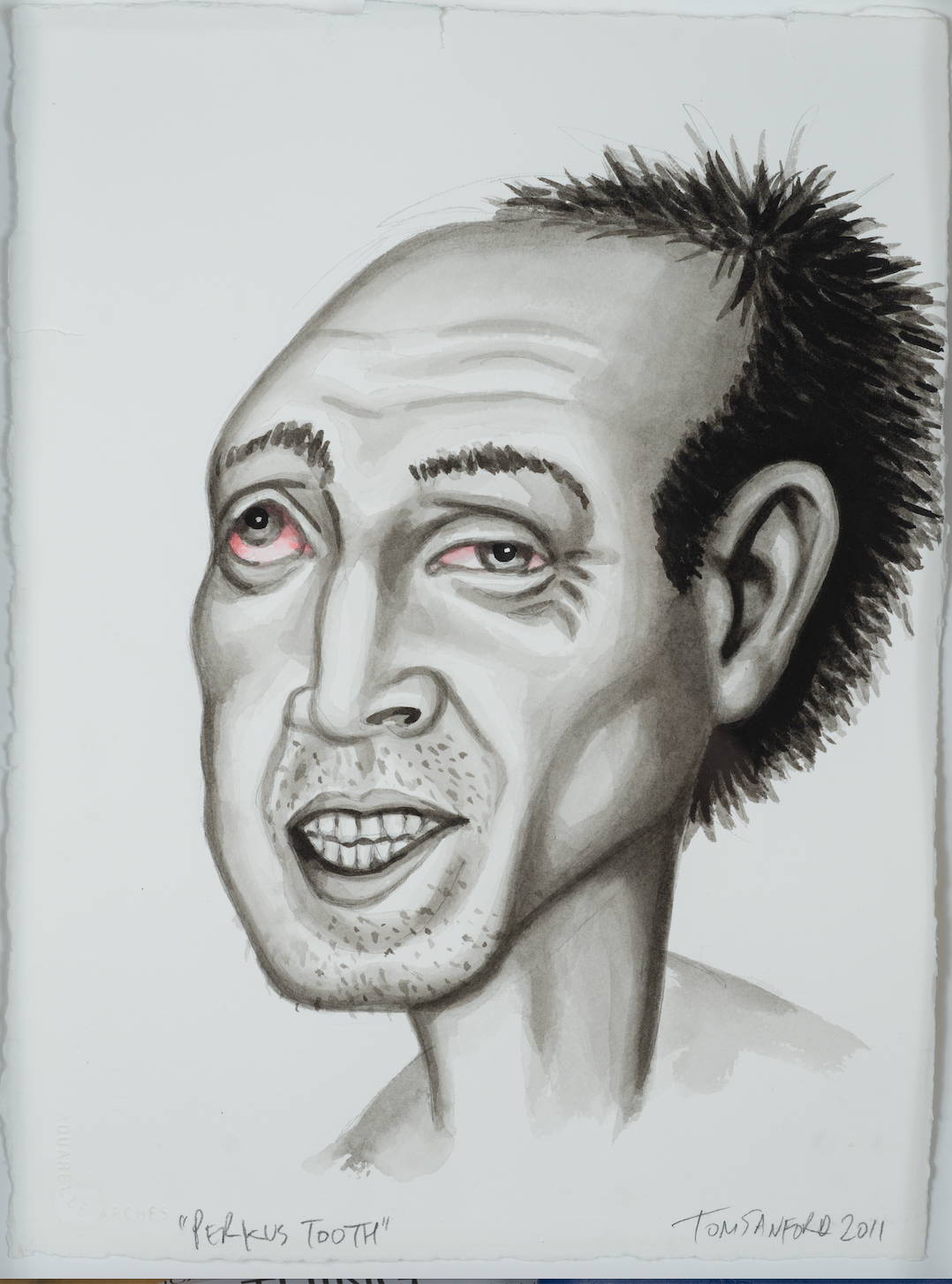
ink drawing Tom Sanford/photo Sam Walker
Sometimes I can’t wait for the peanut butter of my writing to be engaged by the chocolate of an art or artifact, so I force the issue. Right after I wrote about chaldrons in Chronic City I was invited to contribute an object to a series of objects called The Thing Quarterly. The Thing described itself as a “publication” — a series of (mostly) useless objects created by different artists and writers, which if you subscribed to it, would arrive in your house. Like a chaldron, if you could only win the Ebay auction!
I opted to design a pair of glasses. I’d always been fascinated, as a glasses-wearer, by the fact that we walk around with tiny pieces of text hidden along the insides of the earpieces, so near to our brains and our eyes. Because most eyeglasses-earpieces have words discreetly printed on them. Shouldn’t those words be important, or at least interesting? I decided my glasses-frames would be for people who wanted to see chaldrons, and be assisted in telling “real” chaldrons from fake ones.

“Chaldron Optical System”/photo Sam Walker
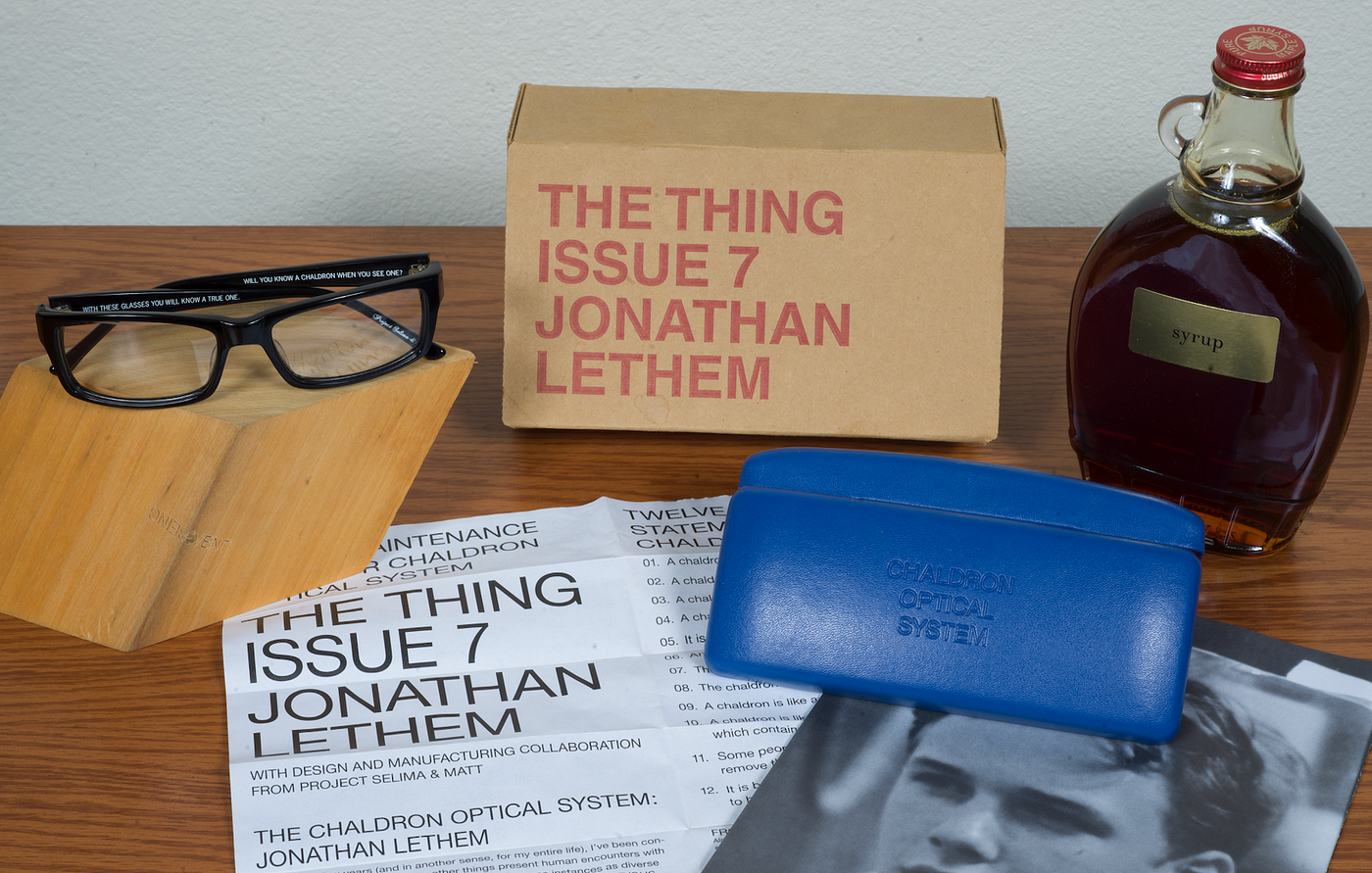
My Thing and a few other Things/photo Sam Walker
Around the same time, I get a chance to collaborate with the artist Matthew Ritchie. He’d begun a series of drawings called “Haruspex”, and he asked a group of authors to provide a text describing an “impossible object”. Well, that was a cinch. Most of these statements were extracted directly from the novel:
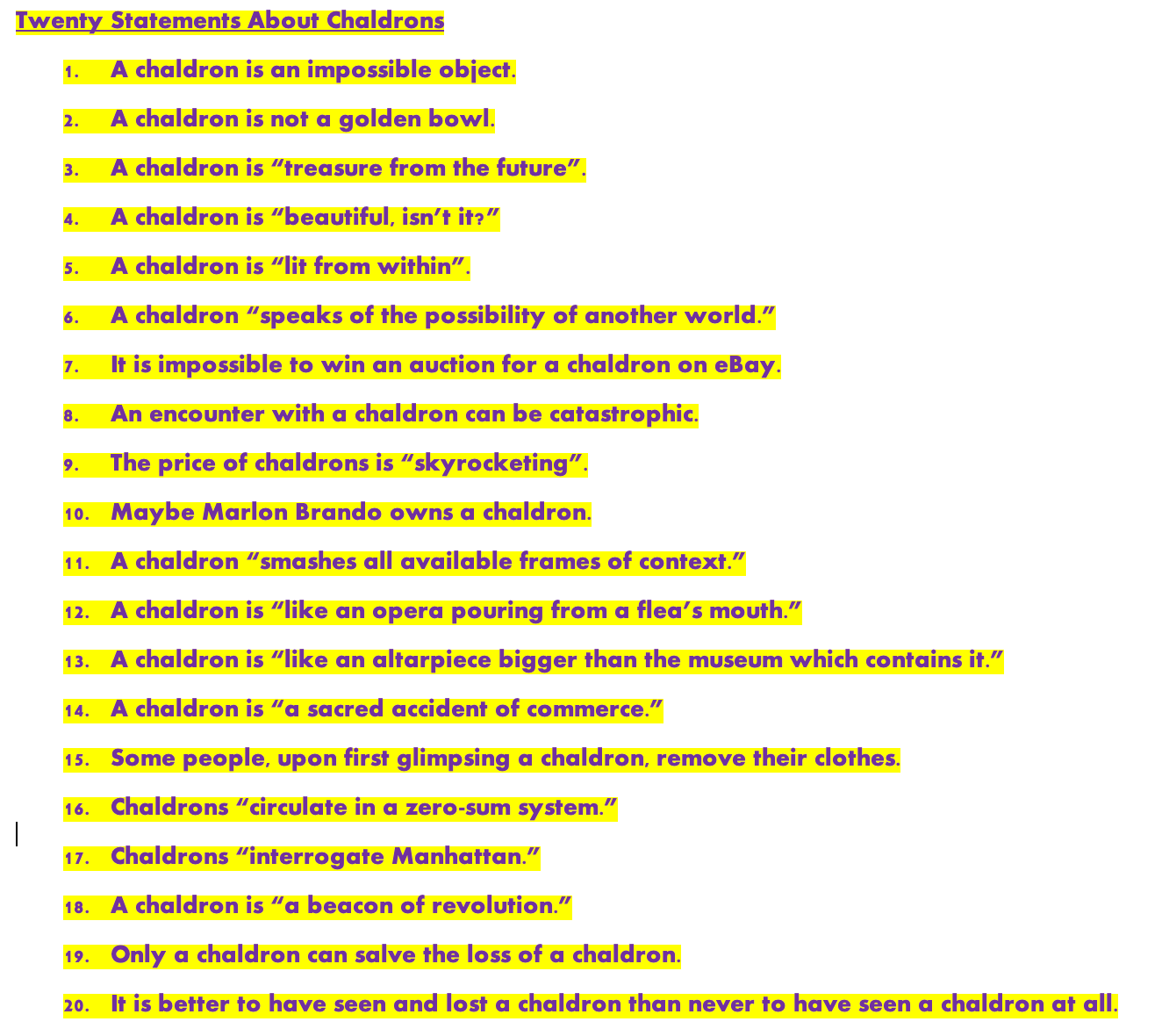
My text for Matthew Ritchie’s exhibition.
And here is Matthew’s “Haruspex V”, which I prefer believing is a portrait of a chaldron:
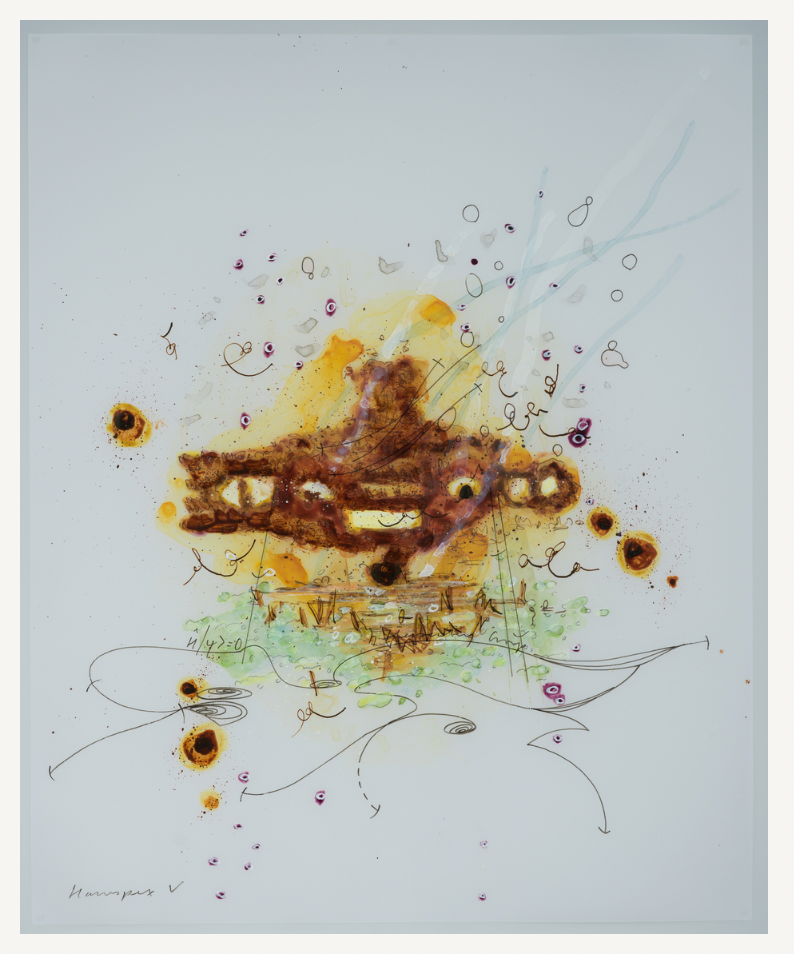
Matthew Ritchie, “Haruspex V”/photo Sam Walker
When I wrote a piece for the photographer David Maisel, he was kind enough to allow me to pick out two pieces in exchange. Each of these is a chaldron too, for me:

David Maisel, from History’s Shadow/photo Sam Walker
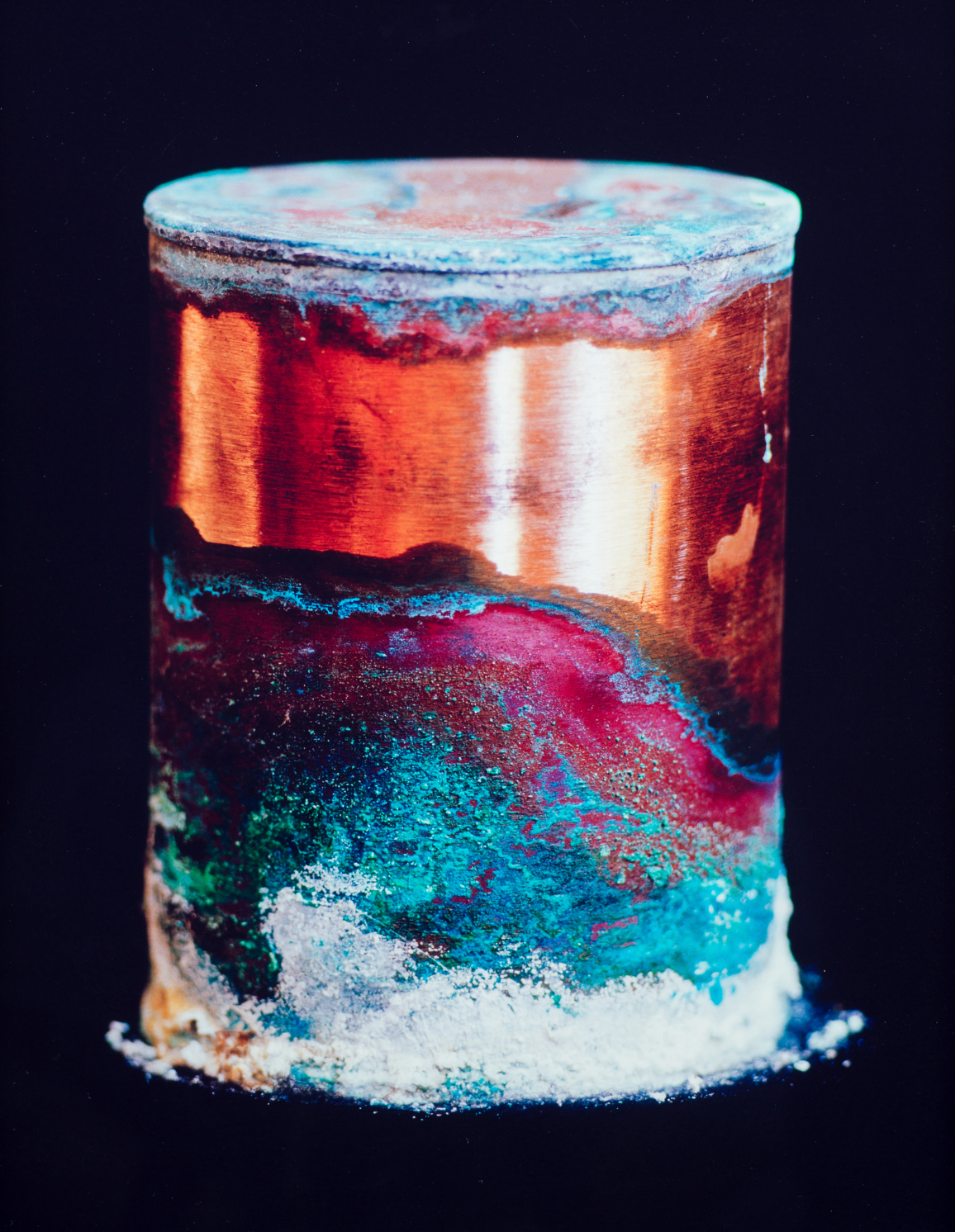
David Maisel, from Library of Dust/photo Sam Walker
The Charles Long sculptures littering my home are plainly attempts to render chaldrons.
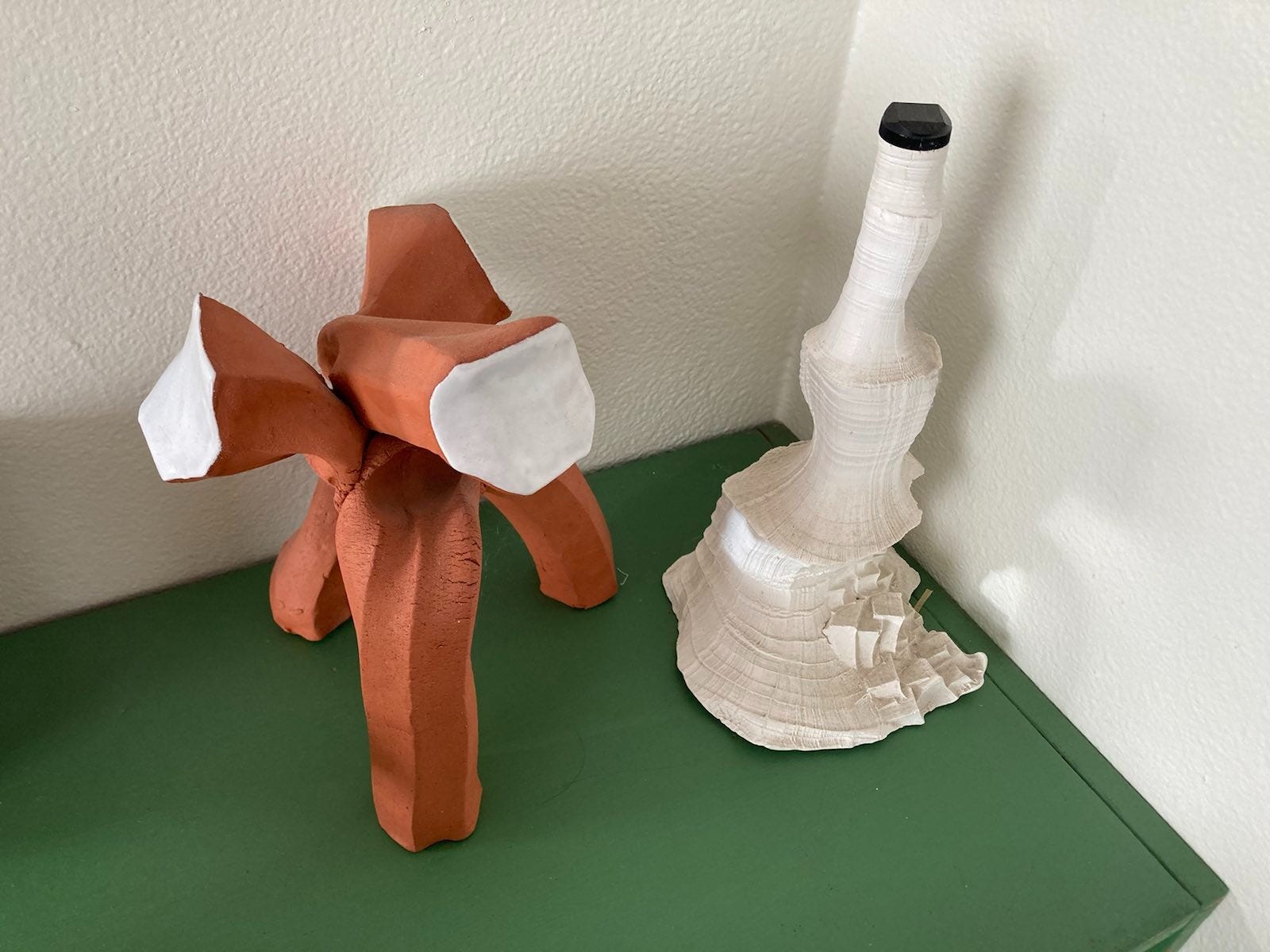
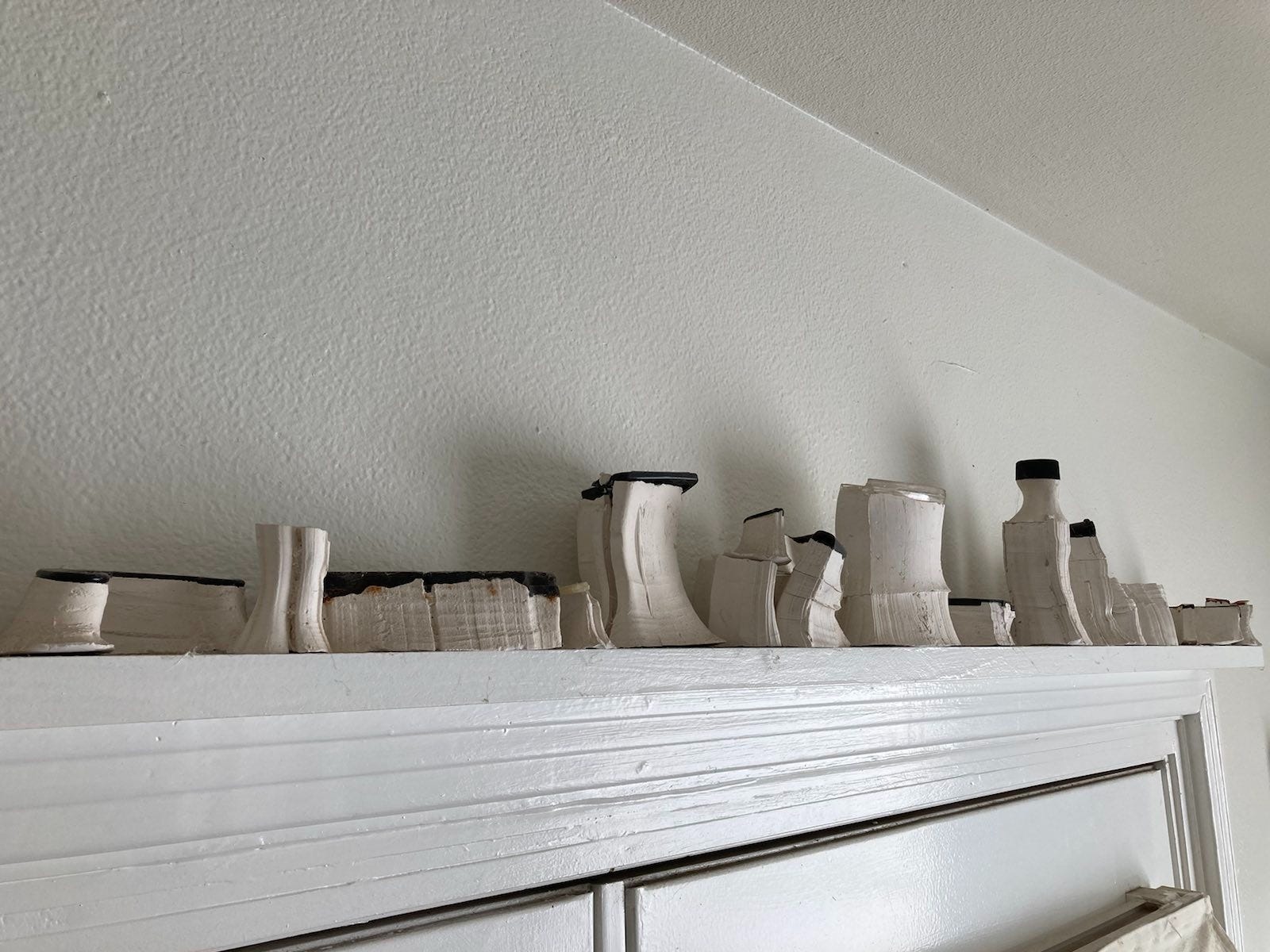
And Perry Hoberman’s Guston-esque white-ink doodle, hanging in my kitchen, is surely a depiction of someone hypnotized by a chaldron.
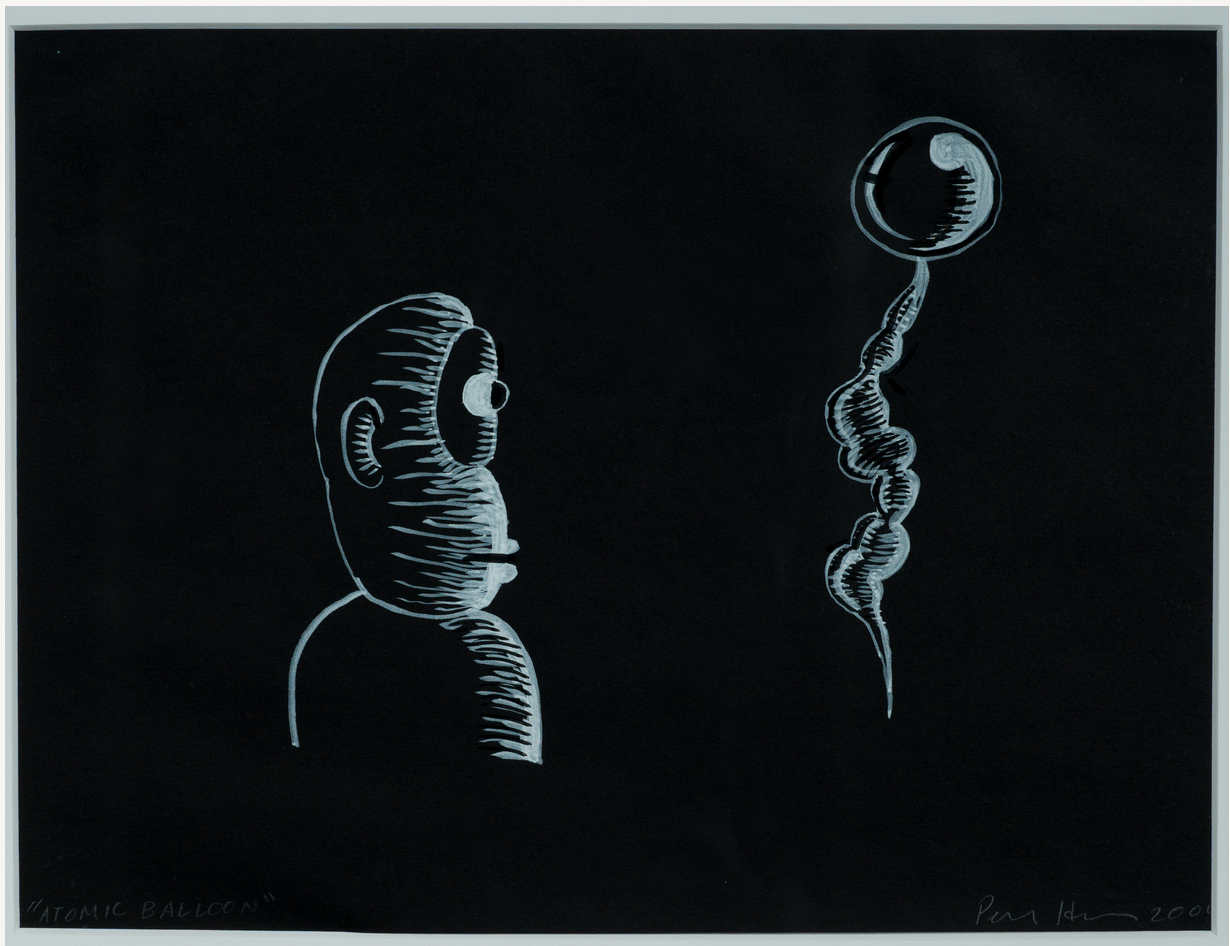
art Perry Hoberman/photo Sam Walker
My life, it turns out, is chaldron-blessed. I see them everywhere I look.
Recommend
About Joyk
Aggregate valuable and interesting links.
Joyk means Joy of geeK
